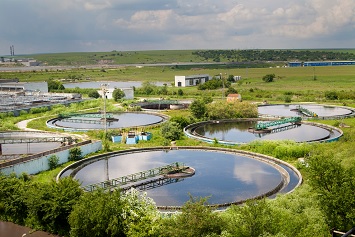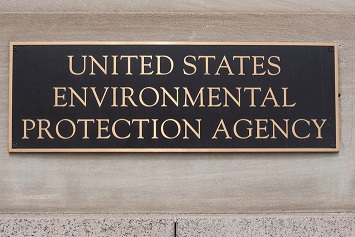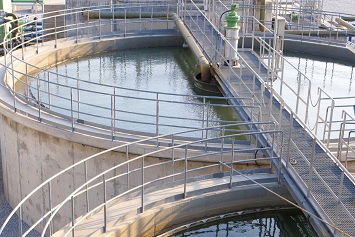Following a 14-month performance audit of the EPA’s biosolids program, the EPA’s Office of Inspector General (OIG) found what it believes to be significant gaps in the Agency’s implementation of its statutory obligation to protect human health and the environment. The major weakness identified by the OIG relates to the EPA’s regulation of pollutants in biosolids.

The Agency’s Biosolids Rule (40 Code of Federal Regulations (CFR) Part 503), which addresses biosolids used as fertilizer, covers nine pollutants (all heavy metals) and imposes requirements such as limits on pollutant concentrations. However, after piecing together information from studies and reports, the OIG says that biosolids contain 352 contaminants—including 61 that are listed as acutely hazardous, hazardous, or priority pollutants in other EPA programs—for which the Agency does not have complete risk assessment information. Therefore, says the OIG, the EPA cannot state that biosolids applied to land pose no risk to the public. Moreover, says the OIG, the number of pollutants in biosolids appears to be growing as emerging substances such as pharmaceuticals, steroids and hormones, and flame retardants are being detected. Biosolids also contain pathogens, such as bacteria, viruses, and parasites, which can cause disease.
These and other aspects of the Biosolids Program are discussed by the OIG in its report. Based on its review, the OIG states that the Agency is “either not fully implementing its processes, the Clean Water Act [CWA], and the EPA’s Biosolids Rule, or it has control weaknesses.” To address the perceived deficiencies, the OIG made 13 recommendations to the Agency, which are intended to improve risk assessment tools for biosolids, sampling practices, data collection, public transparency about what the EPA knows about the safety of biosolids, and training for EPA staff.
Scientifically Debatable
In their initial response to a draft of the OIG’s report, the heads of the Agency’s Office of Water (OW) and Office of Enforcement and Compliance Assurance (OECA) expressed disagreement with several of the OIG’s findings and conclusions. The OW/OECA stated:
“We are particularly concerned about how the science is presented in the OIG report. It is biased and raises alarm due to the use of narrowly selected studies and examples, and information that is taken out of context or that is not relevant to the Clean Water Act (CWA) statutory requirements. Also, the subject is presented in a scientifically debatable manner. There is no attempt to make it clear to the reader that the occurrence of pollutants in biosolids does not necessarily mean that those pollutants pose a risk to public health and the environment.”
In response to these concerns—and also the EPA’s assurances that it was already doing some of the tasks the OIG says should be done—the OIG modified several recommendations. However, the EPA stated that it still did not agree with five of the recommendations and only partially agreed with several others. The OIG notes that discussions with the Agency offices to resolve the differences are under way.
The manner in which some issues will be resolved may impact those entities subject to the Biosolids Rule. Potential changes would likely most affect the preparer of biosolids (usually the owner/operator of a treatment works) who is responsible for sampling biosolids for metals and pathogens and reducing the attractiveness of biosolids to mosquitoes, flies, fleas, rodents, birds, and other organisms that may carry disease-causing organisms to the human population.
Sewage Sludge to Biosolids
Sewage sludge is the solid, semisolid, or liquid residue generated during the treatment of domestic sewage. When the sludge is treated to meet EPA standards for land application, it is referred to as a biosolid. But even with treatment, biosolids can still contain pollutants harmful to the environment and human health. The OIG’s report suggests that there is significant disagreement among stakeholders about the level of risk the pollutants in biosolids pose to people.
According to the EPA, contaminants in a biosolids product will vary depending on the source of the biosolids and over time, and the occurrence of pollutants in biosolids does not necessarily mean that those pollutants pose a risk to public health and the environment. But the OIG noted a 2002 report from the National Research Council, which stated, “There is no documented scientific evidence that the [Biosolids Rule] has failed to protect public health. However, additional scientific work is needed to reduce persistent uncertainty about the potential for adverse human health effects from exposure to biosolids.” One major concern relates to workers who apply biosolids; but, again, there does not seem to be conclusive evidence about the level of risk.
The Biosolids Rule affects any person or entity who prepares sewage sludge; applies sewage sludge to the land; fires sewage sludge in a sewage sludge incinerator; owns/operates a surface disposal site; and emits exit gas from a sewage sludge incinerator stack. The rule contains limits for pollutants in land-applied biosolids. In addition, the rule establishes a ceiling concentration for regulated pollutants and limits for cumulative and annual pollutant loading rates. The cumulative rate is the maximum amount of regulated pollutants that can be applied to an area of land. The annual rate is the maximum amount of a pollutant that can be applied to a unit area of land during a 365-day period. Land application must also comply with protections for endangered species, and appropriate precautions must be taken to prevent biosolids applications to frozen, snow-covered, or flooded land from entering surface waters or wetlands unless specifically permitted under the CWA.
The EPA administers the Biosolids Program in 42 states; the Agency has authorized the remaining 8 states (Arizona, Michigan, Ohio, Oklahoma, South Dakota, Texas, Utah, and Wisconsin) to administer their own biosolids programs.

Understaffed
The OIG is clearly concerned about the resources the EPA has allocated to the Biosolids Program. For example, in 2013, the Agency consolidated its oversight of biosolids compliance monitoring and enforcement into the Biosolids Center of Excellence, located in EPA Region 7.
“At the time of our review, there were two staff at the center,” states the OIG. “They focused on biosolids enforcement for major wastewater treatment facilities that submit biosolids annual reports. In 2017, there were approximately 2,700 of these major facilities.” The center staff told the OIG that inspections were de-emphasized due to other, higher-priority water issues.
The OIG conceded that the EPA is somewhat constrained by law in how it implements the program. “Past reviews showed that the EPA needed more information to fully examine the health effects and ecological impacts of land-applied biosolids,” states the OIG. “In these cases, where more information is needed but does not exist, the related law and regulations are silent on whether the EPA is required to obtain additional data to complete biosolids risk assessments. Without such data, the Agency cannot determine whether biosolids pollutants with incomplete risk assessments are safe.”
Agreement
Given the importance of risk assessments of unregulated pollutants, the OIG made two recommendations to the OW:
- First, complete development of the probabilistic risk assessment tool and screening tool for biosolids land application scenarios.
The OW concurred with this recommendation, stating: “The CWA requires the EPA to identify pollutants found in biosolids, determine whether pollutants found present risk to human health and the environment, and regulate those pollutants that pose risk. Work is already underway to complete tools needed to perform risk assessments on pollutants found in biosolids. The Biosolids Screening Tool identifies pollutants, pathways (e.g., drinking water ingestion, produce ingestion) and receptors (e.g., adult, child) of greatest interest and informs decisions about the need to perform more refined risk assessments, or to address data gaps or uncertainties. Chemicals found in biosolids that do not pass screening will be prioritized and refined risk assessments will be done using a multimedia, multipathway, multireceptor, probabilistic risk assessment (PRA) modeling framework.”
- Second, develop and implement a plan to obtain the additional data needed to complete risk assessments and finalize safety determinations on the 352 identified pollutants in biosolids and promulgate regulations as needed.
The OW concurred here, as well, and stated: “The CWA requires the EPA to determine whether pollutants found in biosolids pose a risk to human health and the environment. Work is already underway to obtain the data needed to complete risk assessments. For example, data are obtained from the extensive literature search and review conducted as part of the development of biennial reviews. In addition, data are developed through collaborative research with biosolids stakeholders (e.g., Water Research Foundation).”
The EPA also agreed with several other recommendations. For example, the Agency agreed to publish all future biosolids biennial reviews (the EPA is required to review the biosolids regulations at least every 2 years to identify additional toxic pollutants and promulgate regulations for such pollutants); publish guidance on methods to control pathogens and vector attraction to biosolids; and issue updated and consistent guidance on biosolids fecal coliform sampling practices.
In addition, the EPA responded positively to the OIG’s recommendation that the Agency’s website provide a clear answer to the question, “Are biosolids safe?” The EPA said it is revising its entire biosolids website to ensure that information is updated and made clearer. According to the Agency, the response is: “There is no documented scientific evidence that the Part 503 rule has failed to protect public health. However, additional scientific work is needed to reduce persistent uncertainty about the potential for adverse human health effects from exposure to biosolids.”

Disagreement
Areas of disagreement included the following:
The Agency did not agree that it should issue guidance on what new technologies are allowable options or alternatives for biosolids pathogen reduction. The EPA said it already has a process in place that fully addresses this OIG recommendation. Specifically, the EPA’s Pathogen Equivalency Committee (PEC) makes determinations on a case-by-case basis for new alternatives for pathogen reduction.
The Agency did not agree that it should modify the OW website to identify unregulated pollutants found in biosolids, disclose biosolids data gaps, and include descriptions of areas where more research is needed. The OW said it already posts information on the website on unregulated pollutants found in biosolids and discloses data gaps in the biennial reviews.
Finally, the EPA did not agree that the OW should issue guidance to include the website address for information on unregulated pollutants in biosolids as part of the required biosolids label and information sheets provided with biosolids distributed or sold to the public and industrial sources for land application. The Agency stated that this recommendation seems to request that biosolids product labels refer people to the EPA website that identifies the unregulated contaminants found in biosolids. “There is no statutory requirement under CWA Section 405 to provide any information on specific regulated or non-regulated pollutants in biosolids on biosolids labels and information sheets, beyond the scope of the labeling requirements in 503.14(e).” The EPA said those labeling requirements are limited to:
- The name and address of the person who prepared the sewage sludge sold or given away in a bag or other container for application to the land.
- A statement that application of the sewage sludge to the land is prohibited except in accordance with the instructions on the label or information sheet.
- The annual whole sludge application rate for the sewage sludge that does not cause any annual pollutant loading rate in Table 4 of 40 CFR 503.13 to be exceeded.
